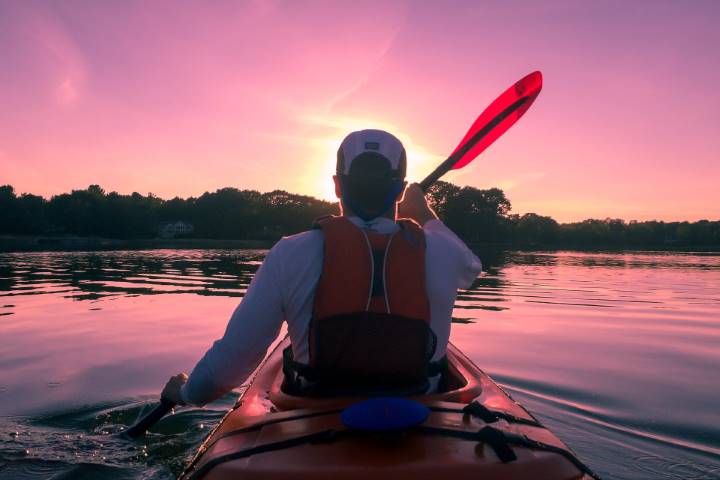Kayak angling is one of the most exciting and fun forms of angling that there is. Kayak anglers will often go out into fast-moving waterways and hunt down catfish, trout, and even salmon. Kayak angling does come with its risks, however, depending, of course, on where you are. Horror stories of alligators launching out of the water at kayak anglers abound in angling forums. So, maybe if you’re a first-timer [and squeamish when it comes to giant, murderous lizards], you should skip your friends’ next trip into the Louisiana Bayou.
Still, alligators aside, kayak angling is a lot of fun. If you are going out with your angling friends for a day on your kayaks, whether you are fishing or not, there are some things that you should know. Those things are exactly what you will find on this page, for we will tell you everything that you need to know about going out boating with kayak anglers.
Let’s find out, shall we?
Kayak Angling Safety
Safety should be the first thing you think about when setting out on a kayak angling trip for the first time [providing you’ve little to no experience on a kayak]. Here are some things to consider:
- Your knowledge of the waterway in question, as well as how fast the waterway moves, and the areas weather for the day;
- The suitability of the kayak that you intend to use, and whether or not you know how to use it;
- Your clothing must be waterproof and should keep you warm even when wet;
- Safety equipment, such as a first-aid kit.
Once you have all of the safety equipment and have fulfilled anything suggested in the aforementioned points, you’re ready to move on and read the rest of this article.
Angling from a Kayak
Your first-time angling on a kayak will certainly be difficult, heck, it can be difficult your fifth or sixth time. Your kayak will feel unbalanced, you will feel like it is about to tip over, and when you have a fish on the line, you will nearly fall overboard. Take a deep breath, relax. Kayaks are built for this, so you don’t need to worry. With regard to equipment [clothing in particular], you can rent it or buy it, but according to the kayaking specialists of https://boatpriority.com/, you must bring it along so you can remain safe in the water. Just because your friend is wearing a T-shirt and shorts, it doesn’t mean you can.
Back to the kayak itself, your kayak has initial and secondary stability, which are terms that relate to the way the kayak stays upright in the water. Initial stability is how your kayak sits flat in the water while you paddle; secondary is how your kayak is able to lean to one side and balances back out.
Relax while you are in the kayak, as otherwise, you may tip over. Loosen the top half of your body up and make casts with your fishing rod gently and easily until you are uncomfortable and relaxed.
Paddling
Paddling in a kayak is where most people find problems. You must row properly to get to your intended destinations. It is important to have strength when you row so that you can get to where you are intending on going during winds and rain. Using the proper rowing technique will preserve your energy for when you’re fighting the mother of all catfishes. You will need to learn the forward stroke, most importantly, for it is the stroke used more than any other and will propel your kayak forward and where you want to go.

Bringing a Fish In
When you finally do hook a fish, you will feel exhilarated, anxious, and all over the place. It’s natural. You mustn’t panic when you have a fish on your line, for you may fall into the water, which depending on your expertise in swimming, could be dangerous. Put pressure on the fish and arch your rod upwards, occasionally loosening the reel so that the fish can swim and tire itself out.
When the fish has tired itself out sufficiently, you can reel it in slowly, but not too fast, for the closer it is and the harder it fights, the higher the chance of you falling out of the kayak. When you finally have the fish beside your kayak, raise your rod so that the fish cannot gather enough slack to swim and simply scoop it out of the water and into your kayak. Good job!
With the help of this page, you now know how to go angling while kayaking. Knowing what to do when venturing out with your friends on their kayaks is a great way to impress them and to show them you’re not the amateur they thought you were.






